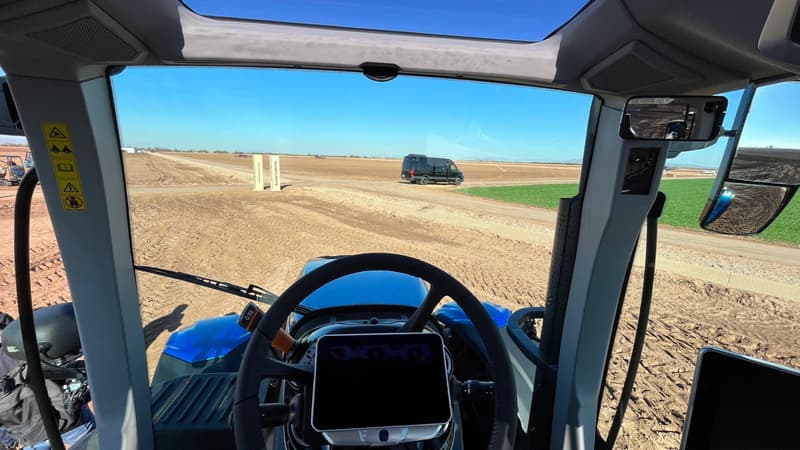From the seed to the harvest, the world leader in agricultural machinery CNH develops tools that are supported by technology to guide the farmer in all his tasks. In Phoenix, in the southwestern United States, where the Arizona desert begins and in the middle of the fields, CNH has set up giant tents. At the beginning of December, the company invited journalists from all over the world to present its new, state-of-the-art tractors.
In the program, demonstrate that the company anticipates the agriculture of tomorrow, the climatic and demographic challenges. Semi-autonomous machines, drones and state-of-the-art applications, CNH focuses above all on machine automation. Guiding the farmer in his decision-making, freeing him time to manage his farm, having a global vision of his plantations and their yields, all thanks to technology, this is the mission that the CNH has given itself, according to Scott Wine, the head of the company, during his presentation.
On site, the Tech&Co team was able to drive some tractors, not without some scares. What is striking above all on board the machines are the screens everywhere: 360° cameras, radars, GPS, detectors. Press a button to go, just pull the joystick to stop, everything is designed to make driving easier.
Born from the acquisition of New Holland in 1991, CNH registered a turnover of more than 17 billion euros in 2021 and is now developing the latest technological tools to stay ahead of its competitors.
And this is possible in particular thanks to the connected system that allows all tractors to be connected to a simple application. Accessible from a computer, a tablet or a simple smartphone, from plowing to harvest, the farmer can have a global vision of his entire farm: its exploitable area, plantations, yields, machine routes.
Very specifically, the operator provides information about his crops in the application, so that the system can analyze the data. These are collected by the vehicle, transferred to the cloud, and are then available from any device.
From the plowing, the data collected by the application will be analyzed to indicate the exploitable land, in each plot. Then for the seed, the app will provide results using a set of colors. Green if the quality of the soil is very good, red on the contrary, if it is not profitable to plant. Programmed upstream, the tractor will follow the path traced by the application and sow almost autonomously.
Aboard a Raven Trident 5550 tractor, a self-contained spreader, the size of the arms at each end is impressive. It is programmed to know exactly where to plant based on a very precise map.
When it comes to harvesting, the New Holland T7.315 HD tractor machine is quite fascinating. From a tractor, the farmer is followed by the harvesting machine, currently being tested, which has no driver on board. Using infrared sensors, the machine senses its surroundings. Here too, the entire system connected to the application allows to know, in real time, the progress of the harvests.
Dan Eslinger makes sure that the data collected is primarily used by the client, but is also used to train the artificial intelligence of the system. “And the entire protocol respects the standards of the data framework,” says one of the CNH executives.
Another technology used by the CNH: lidar. Used to sow hay very accurately and without loss, lidar is a kind of augmented radar that makes it possible to identify the reliefs of a field to obtain a more uniform and faster harvest.
The CNH keeps repeating that all these technologies allow us to go faster and increase yields. In other words, save time and money.
Another stated goal of this use of data technology: limit greenhouse gas emissions with “17% fuel saved at planting, 5% at harvest,” Scott Wine promises. The CNH also presented, for example, the T7 model that works with liquid methane, of which prototype models were launched last year.
Source: BFM TV


